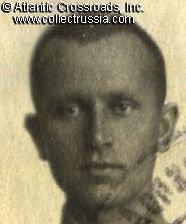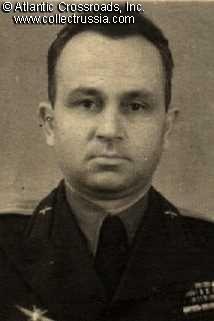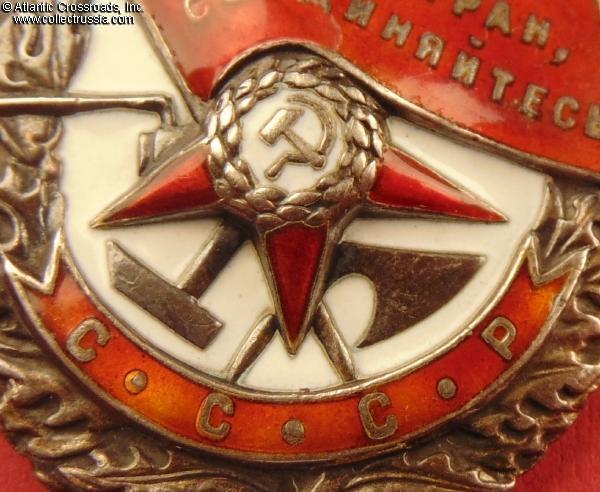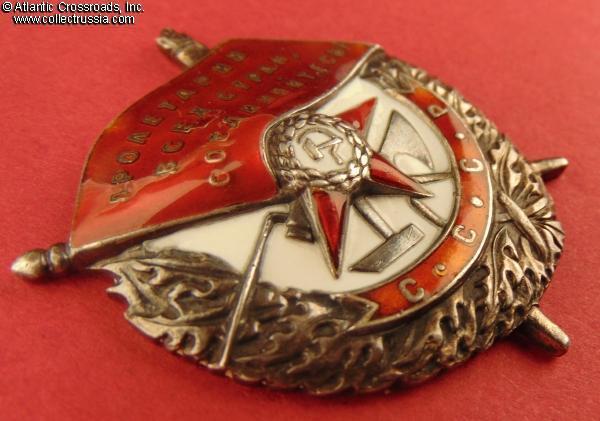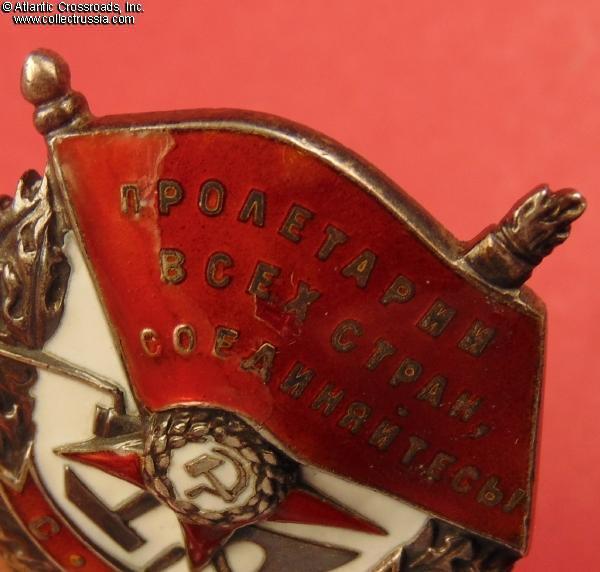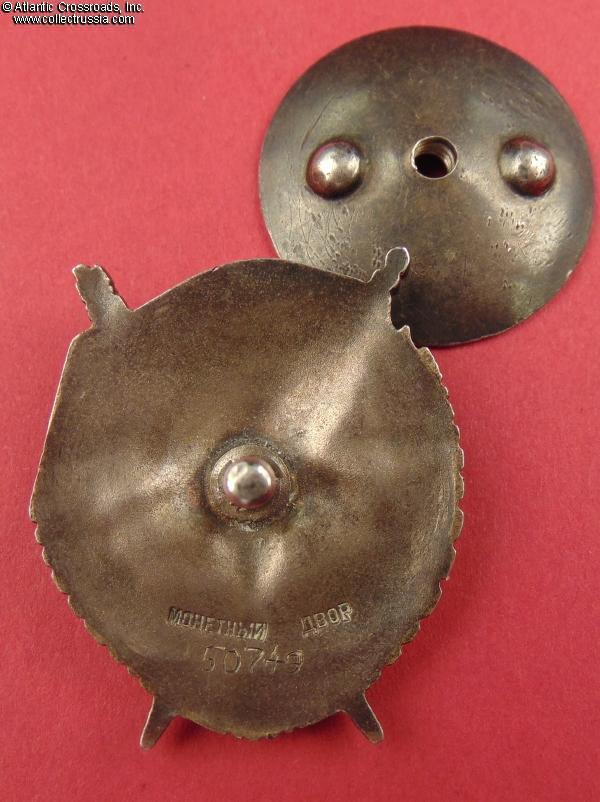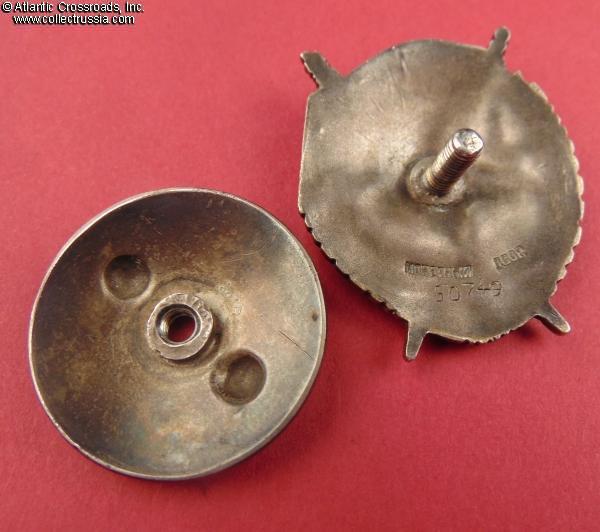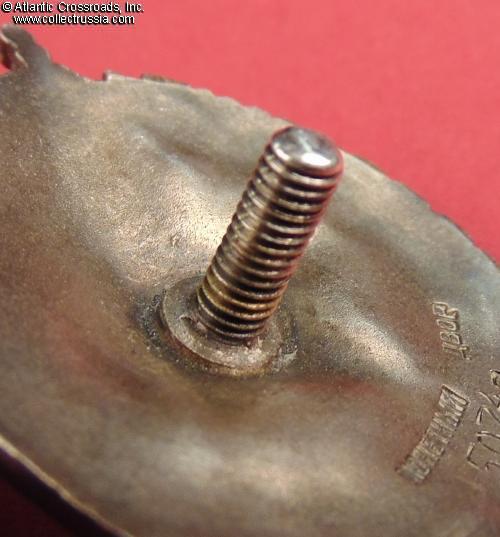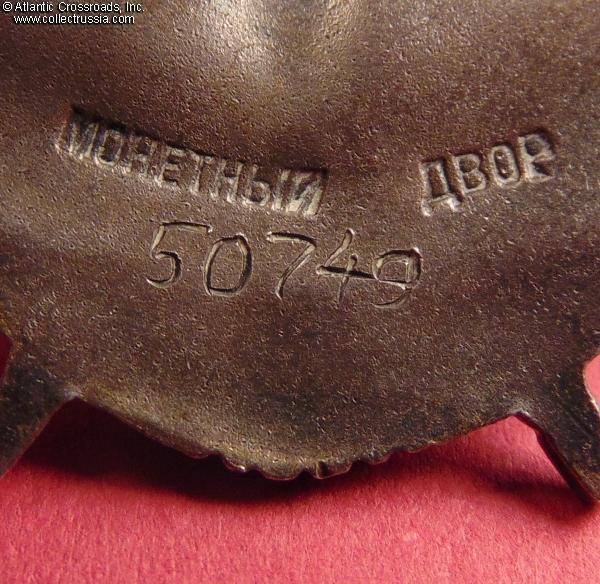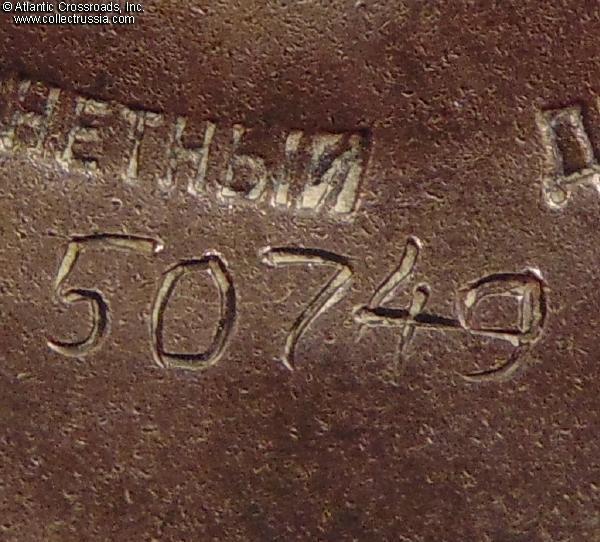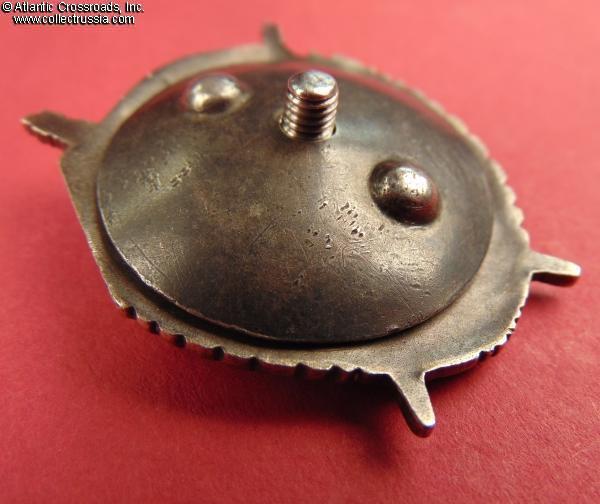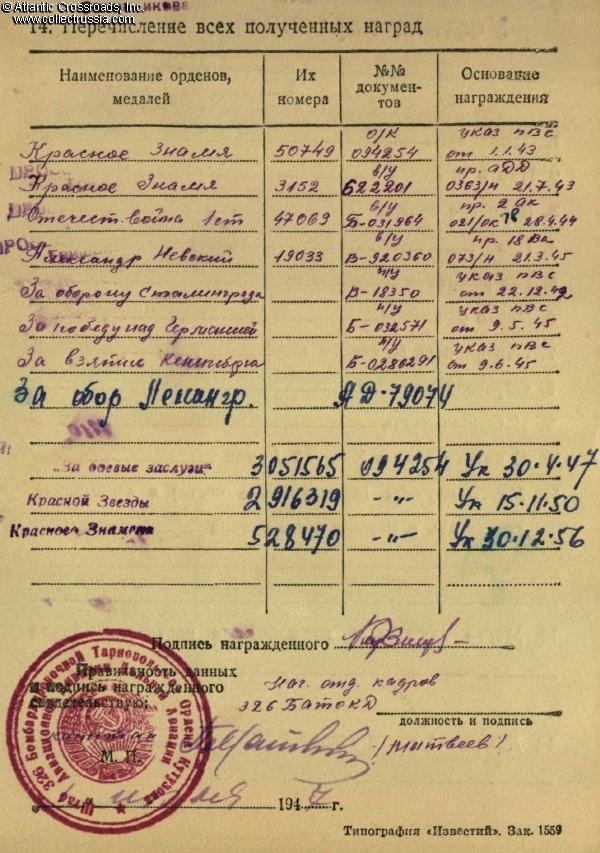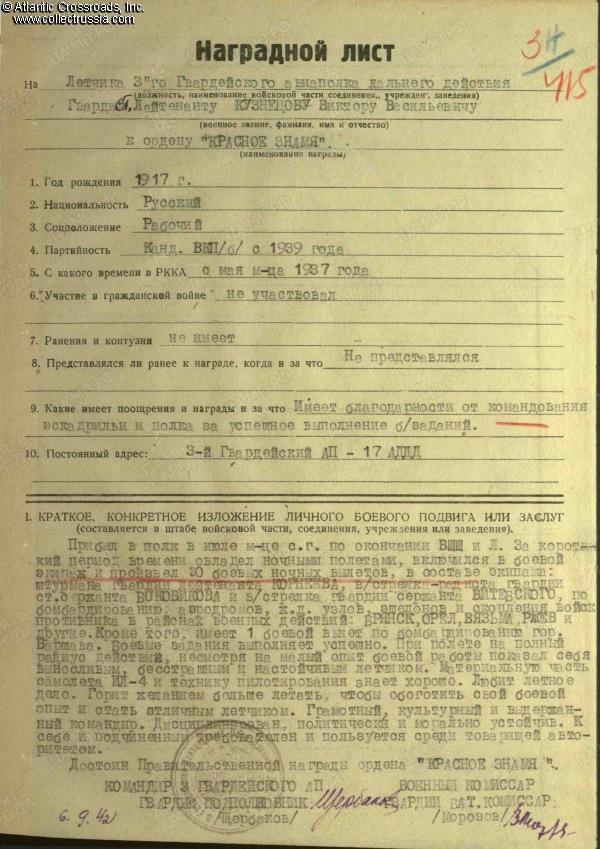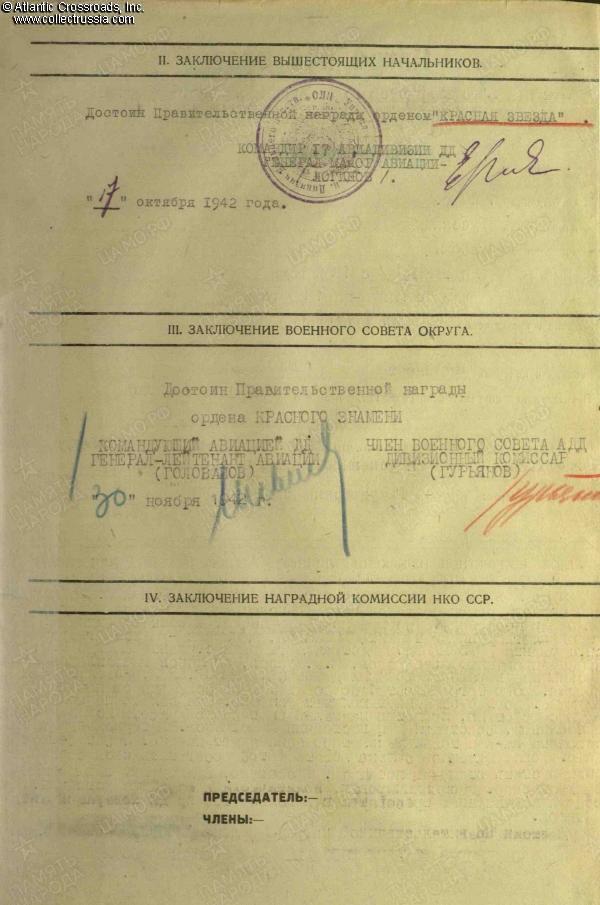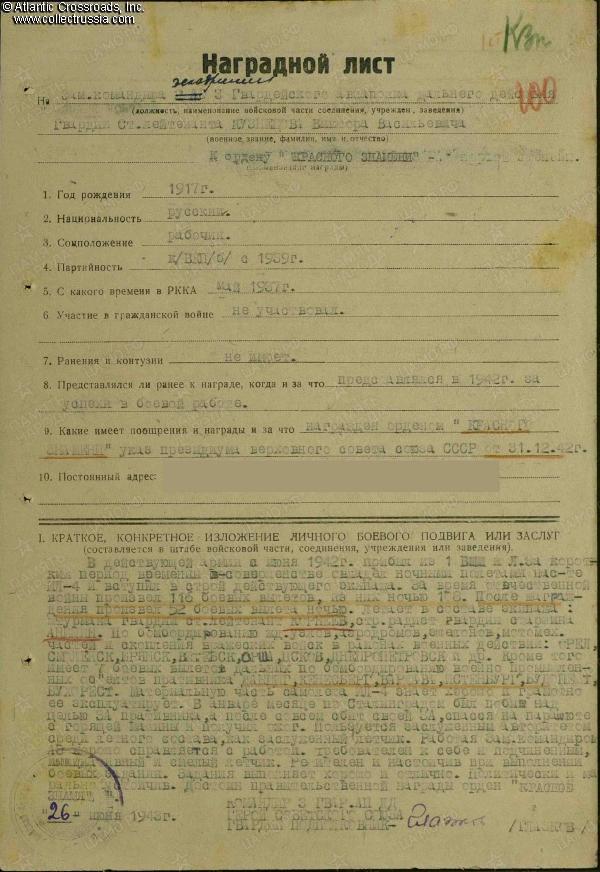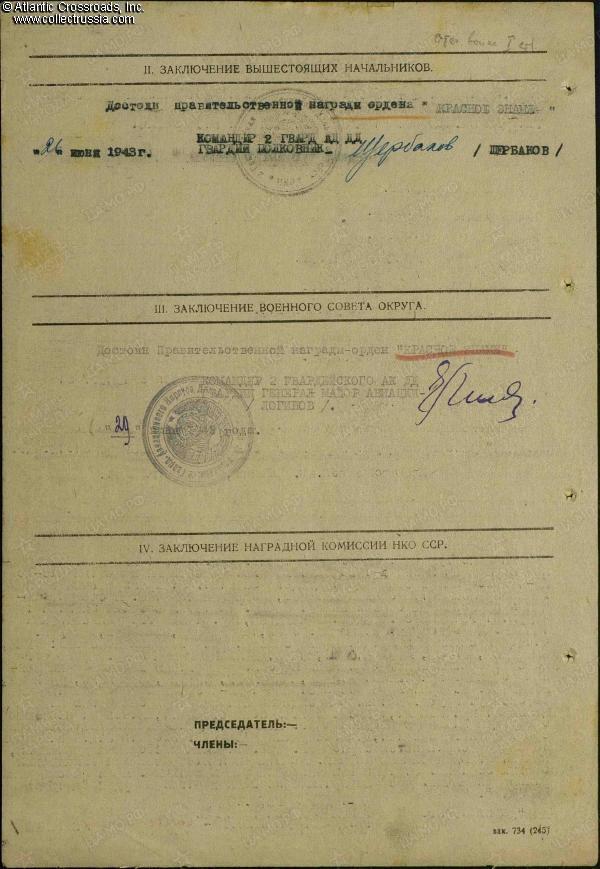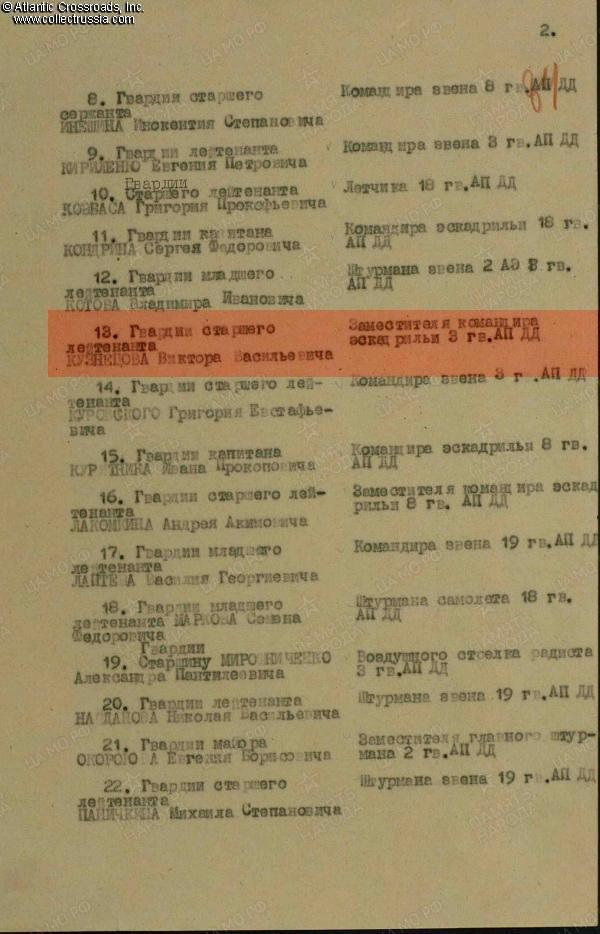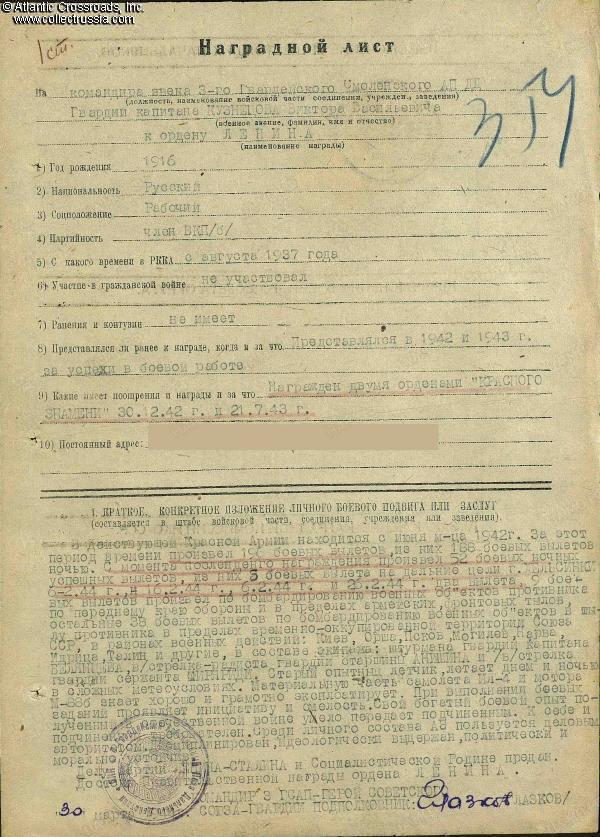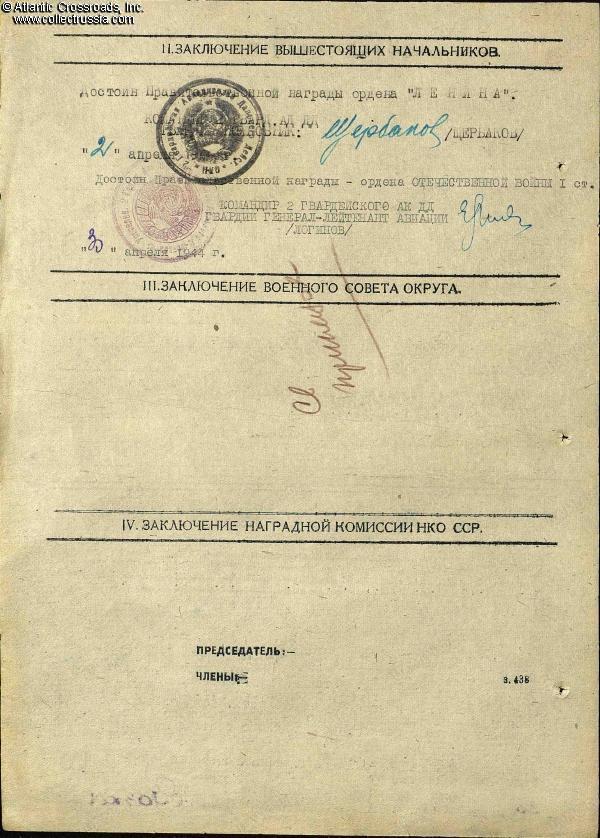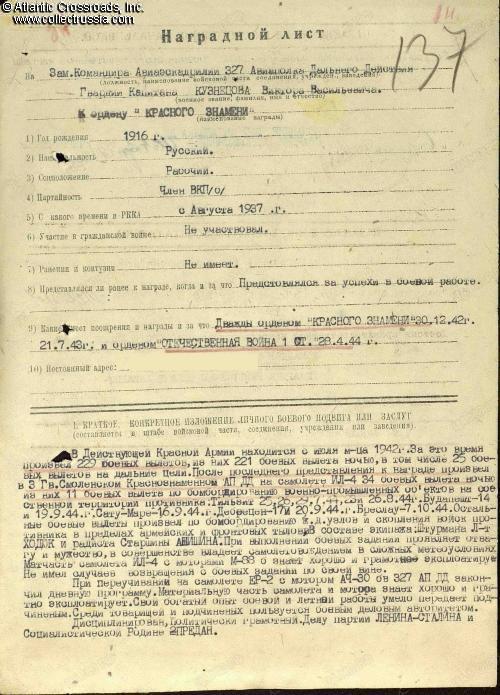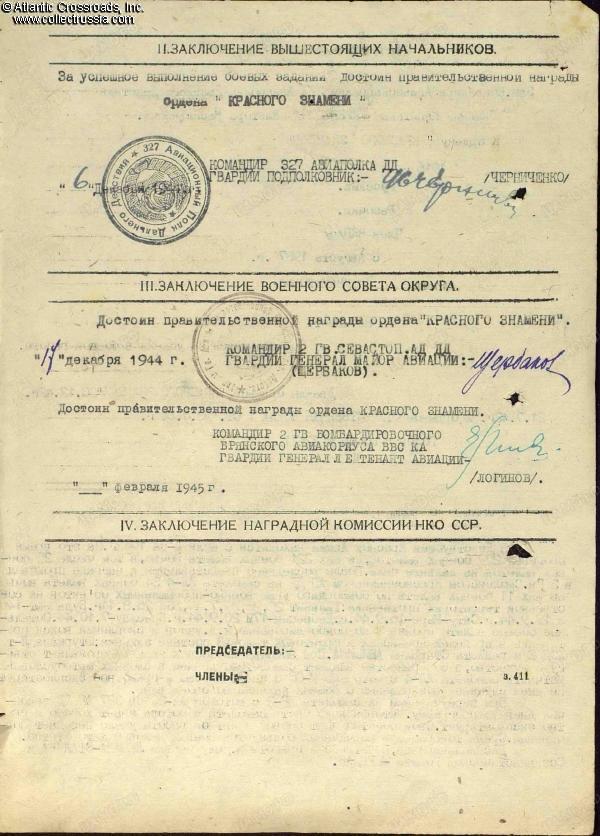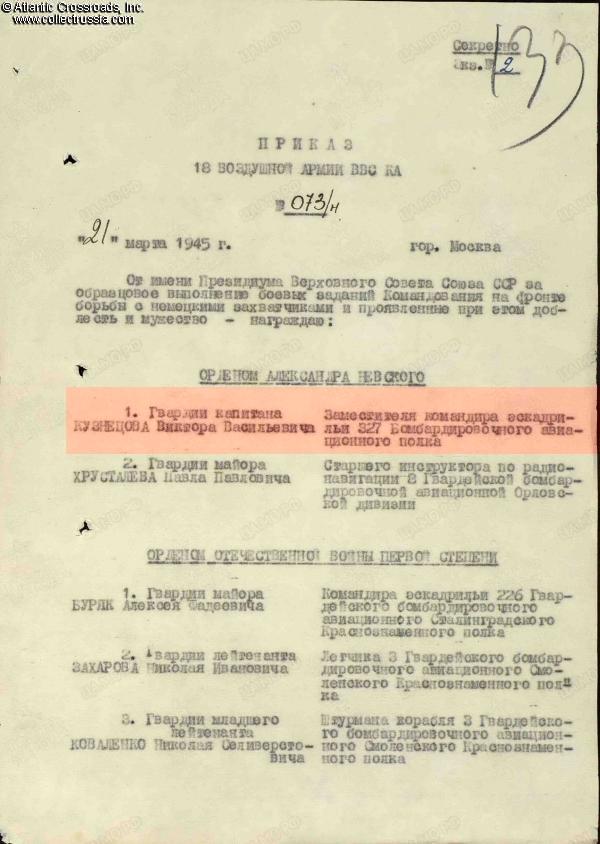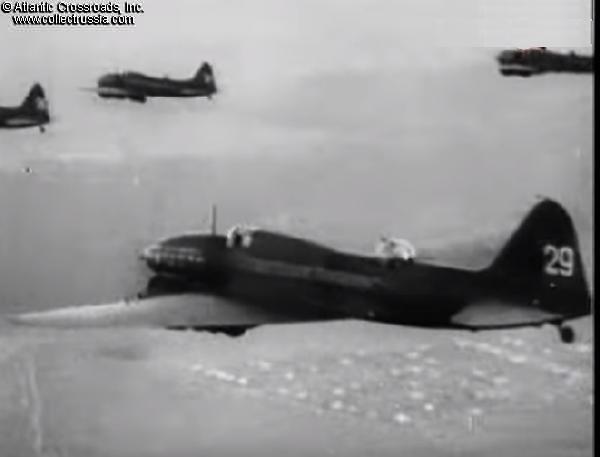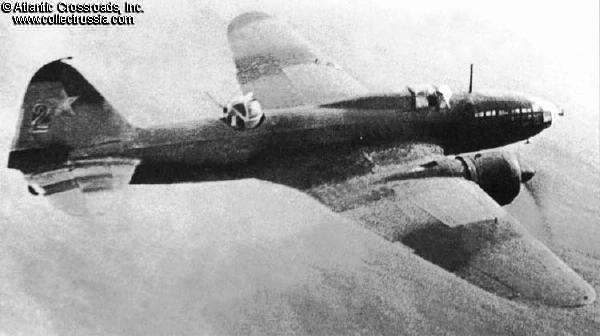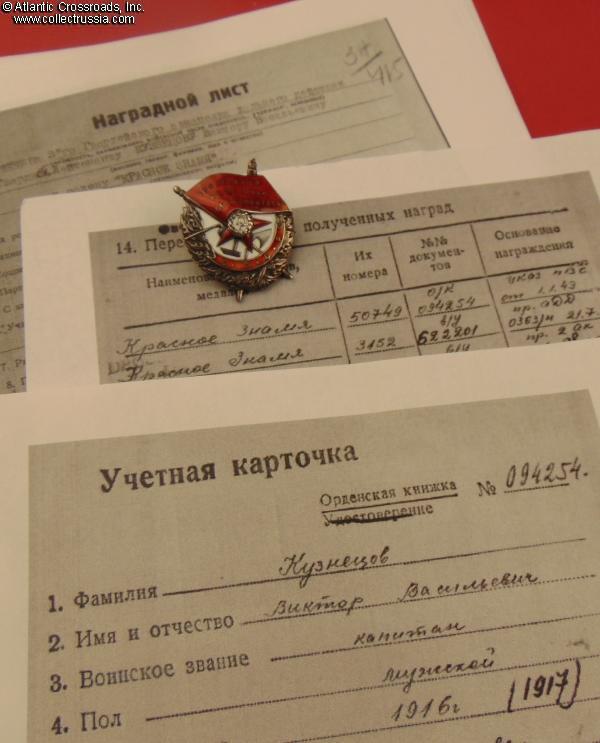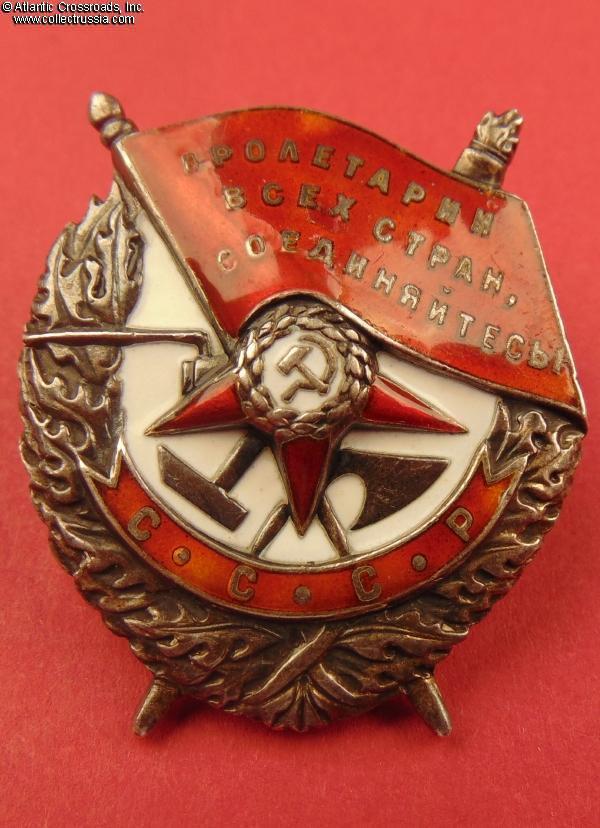
Order of the Red Banner, Type 2, Variation 3, Sub-Variation 1, #50749, awarded on 1 January 1943 to Guards Senior Lieutenant Viktor Kuznetsov (Виктор Васильевич Кузнецов), pilot of the 3rd Guards Long Range Aviation Regiment, 17th Long Range Aviation Division.
Silver gilt, enamels; measures 40.3 mm in height (from the top of the banner to the bottom of the wreath), 36.5 mm in width; weighs 24.8 without the screw plate. According to Durov & Strekalov, this piece was manufactured in 1942 by the Krasnokamsk Mint./ The Order of the Red Banner , V. Durov, N. Strekalov, p. 126/.
In fine condition, respectable for the Order of the Red Banner of the early type. The enamel on the banner is replaced in a narrow strip along the flagpole - the typical vulnerable area - varying in width from approx. 5 to 8.5 mm. There are also a few sh
Silver gilt, enamels; measures 40.3 mm in height (from the top of the banner to the bottom of the wreath), 36.5 mm in width; weighs 24.8 without the screw plate. According to Durov & Strekalov, this piece was manufactured in 1942 by the Krasnokamsk Mint./ The Order of the Red Banner , V. Durov, N. Strekalov, p. 126/.
In fine condition, respectable for the Order of the Red Banner of the early type. The enamel on the banner is replaced in a narrow strip along the flagpole - the typical vulnerable area - varying in width from approx. 5 to 8.5 mm. There are also a few shallow surface chips and flakes not penetrating to silver along the edges of the banner and between the middle and lower lines of the motto. Nevertheless, more than 60% of the enamel on the banner is completely intact and shows a nice luster not dulled by rubbing. The red enamel on the star is replaced on the right arm but nearly perfect on the other two arms, where it has only a few minuscule contact marks. The red scroll with "CCCP" has just a single shallow flake at the right edge, unnoticeable to the naked eye. The white enamel is completely perfect.
The wreath, flagpole and torch show almost no wear, their details are extremely well-preserved and crisp. A good amount of the original gilt finish is still visible throughout. The reverse is free of significant wear and exhibits an attractive patina. A careful examination reveals a small vertical gouge near the top, likely from a friction with a makeshift suspension device that was apparently attached to the screw post. Unlike many other early issues however, this piece has not been fully converted to suspension and retains its original full-size screw post, approx. 11.5 mm long measured from its base. Comes with an original early WW2 screw plate in silver.
To summarize, a nice early piece that presents well despite some flaws.
Born in Moscow in 1917 (or 1916 according to some records), Viktor Kuznetsov had only an elementary school education prior to joining the military in 1937. In July 1942, he graduated from a military pilot school and joined the 3rd Guards Bomber Regiment as a pilot of IL-4 twin- engine bomber. Within his first few weeks in combat, Kuznetsov acquitted himself extremely well, completing 30 nighttime combat missions by early September and earning several thank you notes from his squadron and regiment command. Among his targets were numerous German airfields, railroad hubs, trains, and accumulations of troops in various key locations such as the cities of Bryansk, Orel, Vyazma and Rzhev. Interestingly, one of his missions was to bomb Warsaw, which even though very far from the front at that point of the war, was not out of reach for Soviet Il-4 long-range bombers. (The Soviet bombing of Warsaw in 1941-42 is a little-known fact of the war. The first such attack took place on 23 June 1941, just one day after the German invasion of the Soviet Union; there were more massive air raids in the summer of 1942 that were ostensibly against German military targets but in fact did a great deal of damage to the civilian quarters of the city.)
On 6 September 1942, Sr. Lieutenant Kuznetsov was recommended for the Order of the Red Banner jointly by his regiment commander and military commissar. The award was approved on 30 November 1942 by the Commander of the Soviet Long-Range Aviation Lt. Gen. Golovanov and on the New Year's Day of 1943, officially bestowed by the Supreme Soviet of the USSR.
Although the award commendation did not mention it, it is likely that some of Kuznetsov's first 30 missions were against German troops advancing toward Stalingrad. By that point in time, the battle was fully underway, and the Soviet defenders of the city were being hard- pressed. For the lack of better options, in this situation many of the Soviet long-range bombers were diverted to provide tactical air support to the ground troops. The fact that Kuznetsov took part in the Battle of Stalingrad is evident from his award record, showing that he received the Medal for the Defense of Stalingrad, as well as the commendation for his next award.
By late June 1943, Kuznetsov had completed a total of 116 combat missions, including 108 flown at night. In January of that year, his IL-4 was hit by German anti aircraft fire while flying over Stalingrad and then shot down by friendly fire (one of only cases when such an incident is reported in Soviet documentation!) He managed to jump with a parachute from the burning aircraft and although suffering from burns, survived and soon returned to combat duty. On 21 July 1943, he was decorated with the Order of the Red Banner, 2nd Award (#3152).
By March 1944, Kuznetsov, then already a Guards Major and section leader, had a staggering 196 completed combat missions and was recommended for the Order of Lenin by his regiment commander. Among his targets in the second half of 1943 - early 44 were enemy positions near Kiev, Orsha, Pskov, Mogilev and Tallinn. He also took part in five air raids on Helsinki in February 1944. Although the Order of Lenin award was approved by Kuznetsov's division commander, the award was significantly downgraded for unknown reasons by the Commander of the 2nd Guards Bomber Air Corps to Order of the Patriotic War, 1st cl. The latter was bestowed upon Guards Maj. Kuznetsov on 28 April 1944 (#47069).
In the second half of 1944, Kuznetsov flew a number of missions against targets deep in the enemy territory, including Tilsit, Budapest, and Debrecen. By early December, his score of completed bombing sorties had reached 229 and he was recommended for the Order of the Red Banner. Although seemingly approved by the chain of command, the award he received in March 1945 based on this recommendation was the Order of Alexander Nevsky (#19033), technically a downgrade.
After the war, Kuznetsov continued his service in military aviation. As of 1947, he commanded an air squadron of the 840th Bomber Regiment stationed in the southern part of Sakhalin Island recently conquered from Japan. He remained on active duty at least through December 1956, adding a Medal for Combat Service, Order of the Red Star, and yet another Order of the Red Banner, all of them for length of service, to his impressive list of decorations.
Research Materials: b/w photocopy of the award record card and commendations for the 1942 Order of the Red Banner and three other
wartime decorations.
$1,495.00 Add to cart

